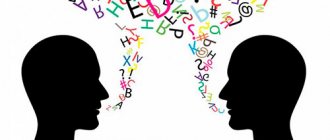Emotional intelligence (EQ, Emotional Quotient, Social Intelligence) is a concept close to IQ (intelligence quotient), but in which the basis is not a person’s intellectual abilities, but his ability to manage his own emotions and empathy for other people. The second common name for the same concept is social intelligence.
The Emotional Intelligence Assessment measures a range of aspects of emotional intelligence to predict your ability to understand and manage your emotions and predict the emotional reactions of others.
When used in testing applicants for a job, an EQ test can include a wide range of test questions, usually presented in the form of questionnaires or mini-cases - scenarios of specific work situations in the workplace. Each situation involves 2 or more parties who interact in some way in the workplace (colleagues, manager and subordinate, employee and client, etc.).
Emotional intelligence tests are widely used at work where a lot of communication is required every day - in call centers of banks and mobile operators, for the positions of operator, sales and customer support managers, as well as for managers at all levels, including the Russian government at the federal level. and regional level. For managers, the ability to recognize emotions and empathize is even more important - it is part of the required skills for effective management. Social intelligence tests are included in the Leaders of Russia tests, and specifically in the tests for managerial potential of the Leaders of Russia competition. You can learn more about the tests of the Leaders of Russia competition in our special articles How to prepare for the competition Leaders of Russia 2019-2020 and Testing for the managerial potential of the Leaders of Russia competition
The competition Leaders of Russia and Leaders of Russia.Politics in 2021 uses separate blocks of tests for emotional intelligence. They are designed to assess how experienced a leader you are, who can understand the emotions of other people (subordinates, colleagues, senior managers), and how effectively you are able to manage your emotions. These are quite long tests, lasting 30-40 minutes, the questions of which may be ambiguous.
The most popular and trustworthy tests for emotional intelligence are the Hall, Lucin, Guilford tests and the Mayer-Salovey-Caruso MSCEIT test, which has 144 control questions. The developers of such tests are all leading companies in the field of hr technologies: SHL, Talent Q, ECOPSY and others.
Nicholas Hall Emotional Intelligence Test
The technique helps determine the level of control over your emotions and the ability to use them in everyday life. The subject is offered 30 statements; he needs to try them on himself and evaluate how true they are. There are 6 answer options to choose from: from “completely agree” to “completely disagree.”
The test evaluates EQ on 5 scales:
- Emotional awareness is the ability to correctly recognize and classify your emotions.
- Self-motivation is the ability to influence one’s behavior.
- Managing your own emotions – self-control, psychological flexibility.
- Empathy is the ability to read other people’s emotions by external manifestations, empathize with other people, and also predict their reactions.
- Managing other people's emotions is the ability to influence the emotional state of others.
More than 100 cool lessons, tests and exercises for brain development
Start developing
The reliability of the results largely depends on the degree of sincerity of the subject and the adequacy of self-perception. Therefore, I do not recommend relying only on this technique.
Go to test
Level of development according to the Lyusin test
Lyusin's method for determining intelligence is based on independent analysis of emotions. A high level according to the Lucin test implies:
- Determining the presence or absence of emotions in yourself and another person.
- The ability to determine what feelings a person is experiencing.
- The ability to recognize the reasons that contributed to the emergence of emotions.
The test questions are easy. You don't have to answer honestly to get a result that lists your IQ as high. The correct answers are easy to guess, so to get a true result, answer honestly. No one will see your answers, so feel free to find out the result.
Thus, it is easy to determine the level of intelligence; take one of the tests and get a true result, on which the need for further development of this indicator will depend.
For development, special techniques, methods and exercises have been developed, which also replenish vocabulary and teach you to be self-confident. Previous articlePreviousNext articleNext
EQ test on the Vikium platform
This test, unlike the previous method, will not force you to delve into yourself. All you need to do is look at photographs of people and choose from a list the emotions that go with them. There are 7 of them in total: surprise, anger, joy, disgust, fear, contempt, sadness.
The technique assesses the ability to read other people's emotions. People who have it well developed are able to communicate delicately and flexibly, unlike insensitive people. The online test will show how correctly you have identified emotions and will highlight the most problematic ones.
Go to test
Emotional intelligence test EmIn D. V. Lyusina
The technique was developed by our domestic psychologist based on his own research. Designed for children over 13 years old and adults. It allows you to evaluate 2 indicators: interpersonal and intrapersonal intelligence. The first is responsible for the ability to navigate other people's emotions: to predict them, direct them in the right direction, empathize and even manipulate them for their own purposes.
The second indicator reflects a person’s ability to control his own emotions, that is, to restrain the manifestation of unwanted ones and evoke desired ones. These two types of intelligence are closely related, so high results on one scale are most often accompanied by high results on the other.
There are a total of 46 statements in the test with which you need to agree or disagree. And again, you will have to evaluate your abilities yourself, which leaves an imprint on the results. For example, even I, a certified psychologist, found it difficult to evaluate the statement “I easily understand the facial expressions and gestures of other people.”
Go to test
Social responsibility
What is this
- the ability to perceive oneself as part of a team;
- interact with colleagues and managers;
- take responsibility for the overall result and other employees, for example, newcomers;
- perform your part of the work efficiently, and, if necessary, take on the tasks of colleagues, for example, if they are sick or cannot cope;
- monitor the further development of the completed project, analyze its success and take into account experience when solving the next tasks;
- Do not shift responsibility to colleagues or managers in case of failure.
Why is it needed?
Detailed EQ test
The technique was developed by the Individual Differences Research laboratory. It is based on the research of University College London professor K. Petridis. It helps assess 15 components of emotional intelligence, including adaptability, social responsibility, self-regulation, empathy, stress tolerance, self-motivation and others.
The subject is offered 60 statements with which he must agree or refute them. After answering all tasks you will receive the result. Unfortunately, it is not as detailed as we would like. You will see how each component is developed in percentage. And the closer the indicator is to a hundred, the better things are. You will also receive an assessment of the state of the emotional sphere as a whole.
Go to test
What parameters are considered when evaluating EI tests?
There are a number of characteristics by which personality can be assessed. For example, in the “Emotional Intelligence” course we study the following components:
- The ability to express emotions. Display true and desired emotions on the face.
- Emotion assessment. Understanding and analyzing one’s own and others’ emotions.
- Using emotions in reasoning. Awareness of how we make decisions in a particular emotional state.
- Understanding the causes of emotions. Our body, our psyche reacts to different events with different emotions.
- Managing emotions. Whatever emotion you experience, you have a choice of how to express it.
Download the manipulation guide
“10 ways to protect yourself and avoid manipulation”
Receive for free in a convenient messenger
Paul Ekman's test for identifying emotions using microexpressions
Another free method in which diagnostics are carried out using photographs. It was developed by the American scientist Paul Ekman, a specialist in the field of emotions and an expert in lie detection. By the way, Paul's daughter is a model. This is exactly what you will see in a series of 39 photographs. There are 7 emotions: anger, contempt, sadness, disgust, joy, fear, surprise. For each picture you need to choose the appropriate one.
After entering your answers, you will learn which emotions you recognize well and which ones you don’t recognize well.
Go to test
Background of the issue
In 1920, E. Thorndike formulated a three-component model of intelligence, including the ability to understand and operate with ideas (abstract intelligence), concrete objects (mechanical intelligence) and people (social intelligence). This is how the concept of social intelligence was introduced into psychology, which was defined by E. Thorndike as “the ability to understand people and manage them, to act wisely in human relations.” Other leading experts in the field of psychology of intelligence, such as C. Spearman, D. Wexler, P. Vernon, J. Guilford, also argued in one form or another that understanding the behavior of other people and oneself should be distinguished as a separate intellectual ability. Among the more modern approaches of this kind, one can name the theory of multiple intelligences by H. Gardner, within which intrapersonal and interpersonal intelligence are distinguished.
Unfortunately, constructs associated with abilities in the field of understanding social interactions and intrapersonal processes have turned out to be complex in terms of their operationalization and differentiation from traditional forms of intelligence. Thus, based on data on the significant intersection of social intelligence with verbal abilities, L. Cronbach came to the conclusion that research in this area is unpromising. However, in the last decade, more and more works have begun to appear in the scientific and popular literature devoted to one of these abilities—emotional intelligence (EI). In a broad sense, emotional intelligence includes the ability to recognize, understand and manage emotions; This refers to both the subject’s own emotions and the emotions of other people. Widespread interest in EI indicates that this concept corresponds well to the ideas of everyday psychology, intuitively seems promising for solving applied psychological problems, and expands existing ideas about the diversity of human abilities, thereby enriching scientific psychology.
Daniel Goleman EQ Test
American psychologist Daniel Goleman has his own, different from others, view of measuring EQ. In his technique, he does not use direct questions, but asks the subject to try on one of 10 situations and try to predict his actions.
The situations are very different: a bad grade at school, unexpected shaking on a plane, a quarrel with a loved one. There are 4 behavior options to choose from in each of them. However, it remains a mystery to me how the author interprets the subject’s choice.
Go to test
Emotional intelligence test by J. Salovey and D. Caruso
This is perhaps the most reliable method to date. It allows you to assess 4 components of emotional intelligence:
- the ability to perceive and express emotions;
- the ability to use emotions to improve performance;
- the ability to understand and analyze emotions;
- the ability to manage your emotions.
There are 2 task sections for each component. Among them are such as identifying emotions from a photo, assessing the emotional coloring of the described situation, and predicting emotions. There are also very unusual and interesting tasks, for example, to describe the color and taste of a specific emotion.
The passage will take at least an hour. But you will receive a detailed and truthful description. I liked this technique more than all the others. It is interesting to take, there are no too straightforward questions, a variety of tasks and accurate results.
Go to test
David Ryback's method for determining the level of emotional intelligence for managers
A person holding a leadership position, like no one else, must be able to find a common language with people. And with a low EQ this is almost impossible.
The author of the book “How to Use Emotional Intelligence at Work” developed his methodology specifically for managers. If you fall into this category, be sure to take advantage of it. There are 60 questions waiting for you with answer options such as “always”, “usually”, “sometimes”, “rarely”, “never”. By answering everything, you will receive a detailed assessment of your emotional sphere and recommendations on your leadership style.
Go to test
Teen EQ Analysis
The test was created for the most emotionally unstable social group. During adolescence, all events are experienced most acutely. If at this time the foundation for the formation of a healthy emotional sphere is not laid, a person may face serious psychological problems in the future.
The technique consists of 20 questions divided into 3 topics: reactions, responsibility, situations. For each question there are 4 possible answers to choose from. For each answer a certain number of points is given. At the end, you need to add up all the points and see what range the number falls into.
Go to test
Interpretation
To get the result on the scale, you need to add up the results for all points, taking into account the sign of the answer:
- Completely disagree (–3 points).
- Mostly disagree (–2 points).
- Somewhat disagree (–1 point).
- I somewhat agree (+1 point).
- Mostly agree (+2 points).
- Completely agree (+3 points).
| Scales | Questions |
| Emotional Awareness | 1, 2, 4, 17, 19, 25 |
| Managing your emotions | 3, 7, 8, 10, 18, 30 |
| Self-motivation | 5, 6, 13, 14, 16, 22 |
| Empathy | 9, 11, 20, 21, 23, 28 |
| Recognizing other people's emotions | 12, 15, 24, 26, 27, 29 |
Test “How well do you determine a child’s feelings”
Children and adults seem to exist in two different worlds, with a gap between them. Sometimes it can be very difficult for them to come to mutual understanding. Responsibility for this naturally lies with those who are older, wiser and more experienced.
The technique helps determine how well you recognize, interpret and evaluate the child’s feelings, and how correctly you respond to them. You will be offered 5 situations from which you need to find the right way out. At the end, each situation is examined in detail and the correct answers are given. So the test performs not only a diagnostic function, but also an educational one.
Go to test







